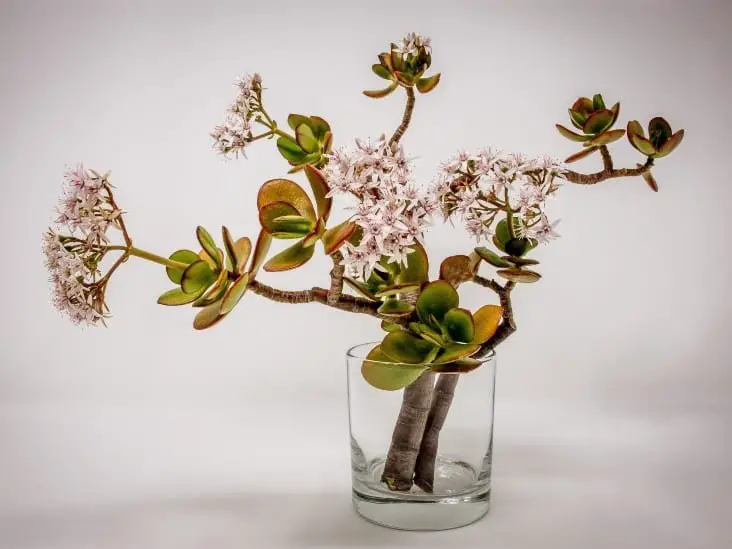6 Amazing Facts You Didn’T Know About the Jade Plant.

The jade plant is an evergreen with thick, glossy, green leaves. It can grow to be quite large and is often used as a houseplant or in bonsai. The jade plant is native to Africa and Asia and has been cultivated for centuries.
Here are six amazing facts about the jade plant that you probably didn’t know!
Multi Sub 【斗破苍穹】 动态漫画 第2季 合集
Did you know that the jade plant is also known as the money plant? This succulent is native to South Africa and Mozambique, and is a popular houseplant in many parts of the world. Here are six amazing facts about the jade plant that you probably didn’t know!
1. The jade plant can live for centuries – some plants are even over 200 years old!
2. Jade plants are considered to be lucky symbols in many cultures, particularly in Asia. It is said that keeping a jade plant in your home will bring you good luck and fortune.
3. These plants are very easy to care for and can survive in almost any type of environment.
4. Jade plants need very little water, so they’re perfect for people who tend to forget to water their plants regularly!
5. The leaves of the jade plant are used in traditional Chinese medicine to treat a variety of ailments such as colds, stomach problems and skin disorders.
6. Despite being called a “money plant,” the jade plant is actually poisonous if ingested by humans or animals. So keep it out of reach of curious pets and small children!
Jade Plant Scientific Name
Jade plants, also known as Crassula ovata, are a type of succulent plant that is native to South Africa. The jade plant has fleshy, green leaves that are shaped like coins. The jade plant can grow to be up to six feet tall and can live for over 100 years.
Jade plants are often used as houseplants or in gardens.
Jade Plant Progression
Jade Plant Progression
The jade plant, or Crassula ovata, is a popular succulent houseplant. It is relatively easy to care for and can tolerate periods of neglect.
The jade plant is native to South Africa and Mozambique and has been cultivated in China for centuries. The jade plant grows slowly and can live for many years with proper care.
A healthy jade plant will have glossy, green leaves and a compact shape.
Over time, the jade plant can become leggy and lose its compact shape if it does not receive enough light. If your jade plant becomes leggy, you can trim back the stems to encourage new growth. Jade plants can also produce small white or pink flowers, but this is rare indoors.
Jade plants are tolerant of a wide range of conditions, but they prefer bright light and well-drained soil. Allow the soil to dry out completely between waterings to prevent root rot. Jade plants are susceptible to mealybugs and scale insects, so be sure to inspect your plant regularly for pests.
Oldest Jade Plant in the World
The oldest jade plant in the world is believed to be over 1,000 years old and is located in China. The plant is known as the “Tree of Heaven” and is considered to be a national treasure. The jade plant is a member of the Crassulaceae family and is native to Africa, Asia, and Europe.
The plant has been cultivated for centuries and was brought to China during the Tang Dynasty (618-907). Jade plants are known for their thick, glossy leaves and beautiful flowers. The tree of heaven is an evergreen that can grow up to 30 feet tall.
It prefers full sun but can tolerate partial shade. Jade plants are drought tolerant and do not require much water or maintenance. These tough plants are also resistant to pests and diseases.
How to Make a Jade Plant Thrive
Jade plants are a type of succulent that originates from Africa. These beautiful plants are easy to care for, making them a popular choice for indoor gardening. If you want your jade plant to thrive, there are a few simple things you need to do.
First, make sure your jade plant is getting enough light. Jade plants do best in bright, indirect sunlight. If you don’t have a spot in your home that gets this kind of light, you can also grow your jade plant under fluorescent lights.
Just be sure to keep the lights about 12 inches away from the plant to avoid burning the leaves.
Second, water your jade plant regularly, but don’t overdo it. These plants store water in their thick leaves, so they don’t need to be watered as often as other houseplants.
Water your jade plant when the soil is dry to the touch and be sure to empty any excess water from the saucer after watering.
Finally, fertilize your jade plant every few months during the growing season with a succulent fertilizer or half-strength general purpose fertilizer. Be careful not to over-fertilize as this can damage the roots and leaves of your plant.
With just a little bit of care, your jade plant will thrive and provide you with years of enjoyment!
How Do You Prune a Jade Plant
Jade plants are beautiful, low-maintenance houseplants that can live for decades with the proper care. One important aspect of jade plant care is pruning. Proper pruning will encourage your jade plant to grow fuller and more densely.
There are a few things to keep in mind when pruning your jade plant. First, always use sharp, clean shears or scissors when cutting. Second, make sure to cut at an angle just above a set of leaves.
This will help promote new growth from the cut area. Finally, don’t be afraid to trim back your jade plant pretty significantly – it will quickly grow back!
If you follow these tips, you’ll have a healthy, happy jade plant that will thrive for many years to come!

Credit: www.tourmyindia.com
What is Special About a Jade Plant?
Jade plants are a type of succulent plant that is native to Africa and Asia. They have thick, fleshy leaves that store water, which makes them perfect for growing in hot, dry climates. Jade plants are also known for their ability to survive long periods without water.
There are many different types of jade plants, but all of them share some common features. For example, most jade plants have dark green leaves with a shiny surface. Some varieties also have variegated leaves, meaning they have two or more colors on their leaves.
Jade plants are popular houseplants because they are easy to care for and can live for many years with proper care. They do best in bright, indirect sunlight and should be watered only when the soil is completely dry. Over-watering can lead to root rot, so it’s important to err on the side of caution when watering your jade plant.
If you’re looking for a low-maintenance houseplant that will add some greenery to your home, a jade plant is a great option!
Is Jade Plant Poisonous?
No, jade plants are not poisonous. All parts of the plant are safe to handle and ingest.
What Happens If You Touch a Jade Plant?
If you touch a jade plant, the leaves might feel a little bit rough. The reason for this is that jade plants have what are called “trichomes.” Trichomes are tiny, hair-like structures on the surface of the leaves that help protect the plant from predators and pests.
They also help to regulate the plant’s temperature and absorb light.
Are there any interesting facts about cacti that are similar to the facts about the Jade Plant?
Are there any amazing facts about cacti that are similar to the facts about the Jade Plant? Both plants are known for their remarkable ability to store water, making them highly adaptable to dry environments. Additionally, cacti and Jade Plants are both members of the succulent family, showcasing their ability to thrive in challenging conditions with minimal care.
Can Jade Plants Live Forever?
No plant can live forever, but jade plants (Crassula ovata) come pretty close. These tough little succulents can survive for decades with very little care. Native to Africa and Asia, jade plants are popular houseplants in temperate climates.
They’re easy to grow indoors, tolerate a wide range of light and watering conditions, and don’t mind being pot-bound. With proper care, a jade plant can live for many years – some even say they’re “virtually indestructible.”
Jade plants are slow-growing succulents that typically reach 2 to 3 feet tall (though they can grow taller under ideal conditions).
They have thick, fleshy leaves that are often variegated with shades of green, yellow, or red. Jade plants produce small white or pink flowers in late fall or winter, but they’re not particularly showy.
Jade plants are notoriously easy to care for.
They prefer bright light but will tolerate lower light levels if necessary. Water your jade plant when the soil is dry to the touch – about once a week in most cases. Allow the soil to dry out completely before watering again; overwatering is one of the few things that can kill a jade plant.
Jade plants are drought-tolerant and will appreciate occasional neglect! fertilize your jade plant once or twice a year with a balanced liquid fertilizer diluted by half.
With just a little basic care, your jade plant will thrive for many years. So why do these hardy succulents have such a reputation for being difficult to grow?
The main problem people have with jade plants is keeping them from getting too big! If you want your jade plant to stay small and compact, give it plenty of bright light and water it regularly (but don’t overdo it). If you let your jade plant get too leggy or allow it to go too long without water, it will be difficult to get it back into shape.
But as long as you keep an eye on it and give it what it needs, yourjade plant will be happy – and may even outlive you!
Conclusion
The Jade Plant, also known as the Lucky Plant, is a popular succulent that is easy to care for. Here are six amazing facts about this beautiful plant:
1. The Jade Plant is native to Africa and Asia.
2. The leaves of the Jade Plant are used in traditional Chinese medicine.
3. The Jade Plant has been shown to improve air quality by reducing carbon dioxide levels and producing oxygen.
4. The Jade Plant is drought-tolerant and can survive long periods without water.
5. The leaves of the Jade Plant can be used to make a tea that is said to have health benefits.